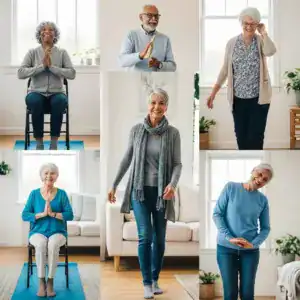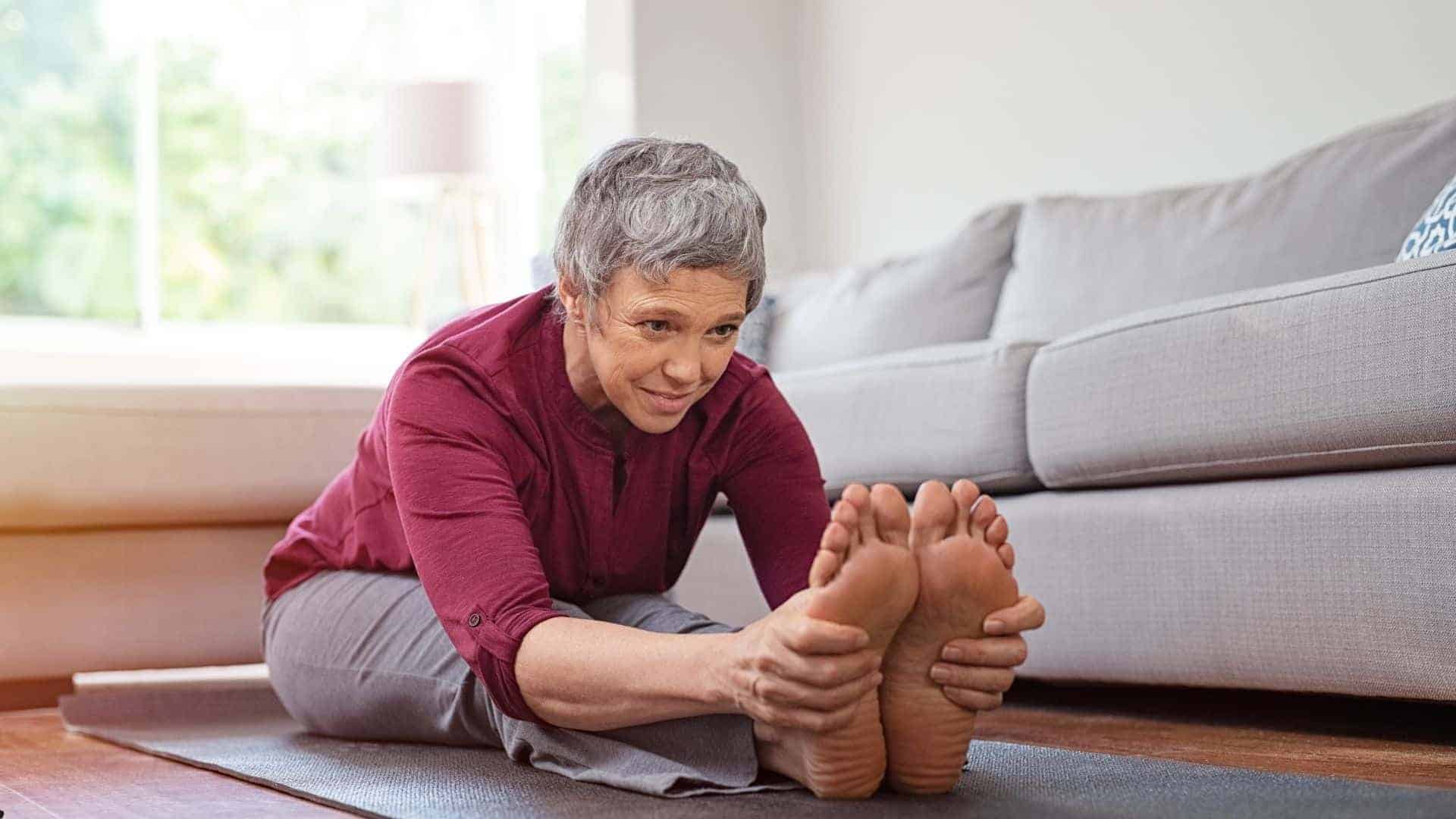
As your loved ones grow older, maintaining their strength, balance, and independence becomes essential for their quality of life.
You might have noticed small changes—perhaps they’re holding onto furniture more often or hesitating on stairs. These moments can be unsettling, but they’re also opportunities to take proactive steps that keep them safe and confident in their daily routines.
Balance exercises are more than just movements; they empower older adults to stay active and reduce the risk of falls.
For families, finding ways to incorporate these exercises into daily life can feel overwhelming, especially when paired with other caregiving responsibilities. But you don’t have to do it alone.
At Amy’s Eden Senior Care, we’re here to support you. Whether it’s through personalized in-home caregiving or our assisted living homes, we help seniors stay safe, active, and thriving. Let’s explore how balance exercises can make all the difference.
What Are Balance Exercises, and Why Are They Important for Seniors?
Balancing exercises are movements that help your body stay steady and coordinated. They strengthen muscles in your legs, core, and other areas that help you stay upright. These exercises also improve your body’s ability to sense where it is in space, which is called proprioception.
Balancing exercises can make everyday tasks, such as walking, climbing stairs, or standing up from a chair, easier for older adults.
These exercises can be simple, such as standing on one leg, or more advanced, like practicing Tai Chi or yoga. No matter your loved one’s fitness level, there are balancing exercises that can help.
Challenges Seniors Face with Balance
Many seniors experience declining balance as they age due to reduced strength, flexibility, or chronic conditions. This loss of stability can make daily activities like walking, climbing stairs, or even standing feel unsafe. It can also increase the risk of falls, a leading cause of injuries among older adults. Other factors can contribute to these challenges such as
- Vision problems
- Slower reflexes, and
- Changes in the inner ear—where balance is controlled
Chronic health conditions like arthritis, diabetes, or neurological issues, such as Parkinson’s disease, can further impact balance. These conditions may lead to muscle weakness, joint pain, or impaired mobility, making it harder to stay steady.

Medications that cause dizziness or drowsiness can make balance more difficult for seniors.
While these challenges are common, they don’t have to limit independence. Balance exercises can strengthen the muscles needed for stability and improve coordination, reducing the fear of falling.
Combined with support from caregivers or physical therapists, these exercises can empower older adults to move confidently and safely, reclaiming their ability to enjoy everyday activities.
Why Are Balancing Exercises Important for Seniors?
Here are 5 reasons your senior loved one should engage in balancing exercises.
1. Lower the Risk of Falls
Falls are a common problem for older adults and can lead to serious injuries like broken bones. Studies show that strengthening muscles through balance training can significantly reduce the chance of falling.
2. Help Seniors Stay Independent
Staying balanced is key to doing things independently, like getting out of bed, bending to pick something up, or walking on uneven ground. By practicing balance exercises regularly, seniors can stay active and care for themselves longer.
3. Improve Physical Health
Balance exercises aren’t just about stability; they also help strengthen muscles, improve flexibility, and posture. These improvements can ease pain from conditions like arthritis and improve blood flow for better overall health.
4. Boost Mental Wellbeing
Balancing exercises often require focus, which can lower stress and improve mental health. Many seniors feel proud when they get better at these exercises, which boosts confidence and happiness.
5. Support a Healthy, Long Life
Staying active, including doing balance exercises, can lead to a longer and healthier life. Seniors who keep moving are less likely to face long-term health issues and more likely to enjoy their favorite activities.
13 Balance Activities for Seniors
These 13 balance exercises are simple, effective, and can be done at home with minimal equipment. They are categorized into basic, intermediate, and advanced, depending on your senior’s activity level.
These exercises target different muscle groups, improve coordination, and enhance stability. Always ensure a sturdy surface or a caregiver nearby for safety while practicing these moves.

Basic Balance Exercises
These exercises are great for beginners or those with limited mobility:
1. Single-Leg Stands
This exercise helps build strength in the legs and improves balance.
- Stand behind a sturdy chair for support.
- Hold the chair with one hand and lift one foot off the ground.
- Hold the position for 10 seconds and then switch legs.
- Repeat 5-10 times on each side, gradually increasing the hold time.
2. Heel-to-Toe Walk
This activity enhances coordination and walking stability.
- Find a clear path, about 5-10 feet long.
- Place one foot directly in front of the other, with the heel touching the toes of the back foot.
- Take slow, controlled steps, keeping your arms at your sides for balance.
- Repeat the walk 2-3 times daily.
3. Rock the Boat
Improve your core strength and posture with this gentle move.
- Stand with feet shoulder-width apart.
- Shift your weight to one leg and lift the opposite foot slightly off the floor.
- Hold for a few seconds, then return to the starting position.
- Alternate sides and repeat 8-10 times.
4. Toe Raises
This move strengthens the lower legs and improves overall stability.
- Stand near a counter or chair for support.
- Rise onto your toes as high as possible, then slowly lower your heels back to the floor.
- Repeat 10-15 times.
5. Marching in Place
Improve hip mobility and balance with this simple activity.
- Stand tall and lift one knee to waist level.
- Lower it and lift the other knee, mimicking a marching motion.
- Continue for 1-2 minutes.
Intermediate Balance Exercises
For seniors looking to challenge themselves a bit more:
6. Side Leg Raises
This exercise strengthens hip muscles, which are essential for balance.
- Stand behind a chair and hold it for support.
- Lift one leg out to the side, keeping your body straight.
- Lower the leg and repeat 10-15 times on each side.
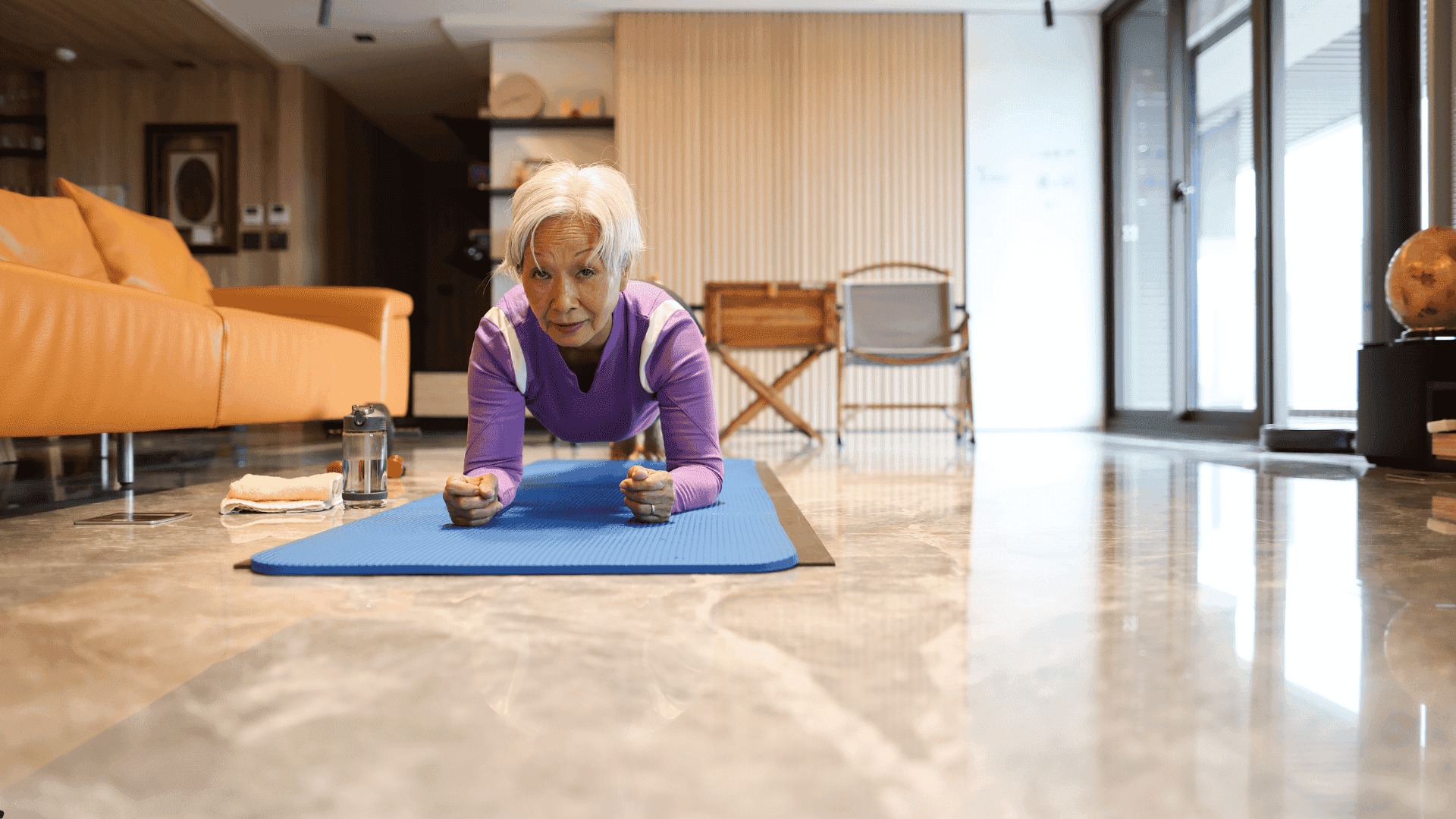
7. Back Leg Raises
This exercise works on the glutes and lower back, improving balance.
- Hold onto a chair and lift one leg straight back without bending the knee.
- Avoid leaning forward while raising your leg.
- Lower the leg and repeat 10 times on each side.
8. Sit-to-Stand
Strengthen leg muscles and practice transitioning from sitting to standing.
- Sit in a sturdy chair with your feet flat on the ground.
- Push through your heels to stand up slowly, then sit back down.
- Repeat 10-15 times.
9. Tightrope Walk
A great exercise for coordination and stability.
- Pretend to walk on a tightrope by placing one foot in front of the other.
- Keep your arms outstretched for balance and walk forward for 5-10 steps.
- Turn around and repeat in the opposite direction.
10. Clock Reach
This exercise builds coordination and strength.
- Stand on one leg while imagining a clock face in front of you.
- Extend your arm to point at 12 o’clock, then 3 o’clock, and so on.
- Switch legs and repeat the exercise.
Advanced Balance Exercises
These exercises are for seniors who are comfortable with more complex movements:
11. Standing Knee Lifts
Strengthen your core and improve balance.
- Stand tall with hands on your hips or holding a chair for support.
- Slowly lift one knee to a 90-degree angle, hold for a few seconds, then lower it.
- Alternate legs and repeat 10-12 times.
12. Overhead Arm Reaches
Enhance your balance and flexibility with this move.
- Stand with feet shoulder-width apart.
- Slowly lift one arm overhead while shifting your weight to the opposite leg.
- Return to the starting position and repeat on the other side.
- Perform 10-12 repetitions.
13. Plank Holds on Stability Balls
Strengthens your core muscles and improves overall balance.
- Place your forearms on a stability ball.
- Extend your legs behind you, forming a straight line from your head to your heels.
- Hold this position for 10-30 seconds, keeping your core engaged.
14. Standing on One Foot (with Eyes Closed)
Challenges your balance and enhances coordination.
- Stand near a wall or sturdy surface for support if needed.
- Lift one foot off the ground and close your eyes.
- Hold for up to 10 seconds, then switch to the other leg.
15. Seated Hamstring Stretches
Increases flexibility and helps prevent stiffness.
- Sit on a sturdy chair and extend one leg straight in front of you, keeping your heel on the floor.
- Lean forward slightly, keeping your back straight, to stretch your hamstring.
- Hold for 10-15 seconds and repeat with the other leg.
16. Tai Chi Moves
Tai Chi is a low-impact exercise that improves balance, coordination, and mental focus.
- Enroll in a local Tai Chi class or follow an online guide designed for seniors.
- Practice slow, flowing movements regularly to see long-term benefits.
Safety Tips for Performing Balance Exercises
When doing balance exercises, it’s important to prioritize safety to prevent falls and injuries. Here are some key tips to keep in mind:
Use Support if Needed
Always use support, if you or your beloved senior are new to balance exercises or feel unsure about your stability. Stand near a sturdy surface, like a wall, countertop, or back of a chair. This gives you something to hold onto if you feel unsteady during exercises. As your balance improves, you can gradually reduce your reliance on support.
Wear Proper Footwear
Comfortable, well-fitting shoes with non-slip soles are essential when doing balance exercises. Avoid wearing socks or shoes with slick soles, as they can increase your risk of slipping. Proper footwear provides better traction and support, reducing the likelihood of falls.
Clear the Area of Obstacles
Before starting any balance exercises, ensure the area is free of obstacles. Remove furniture or objects that could trip your loved one up if they lose balance. A clean, spacious area gives you the freedom to move without the risk of bumping into something and causing an injury.

Start Slowly and Progress Gradually
If you’re new to balance exercises, start with simpler moves and gradually increase the difficulty as you gain strength and confidence. Begin with basic exercises, like standing on one foot while holding onto a chair, then progress to more challenging exercises as your balance improves.
Focus on Proper Form
Always pay attention to your loved one’s posture and form during exercises. Keeping your body aligned helps prevent strain and improves the effectiveness of the exercises. For example, during standing exercises, ensure your core is engaged, your back is straight, and your knees are slightly bent.
Stay Hydrated and Take Breaks
Doing balance exercises for a longer period can be tiring. Keep your senior stays hydrated by drinking water before, during, and after your exercises. If they feel fatigued or lightheaded, take a break and rest for a few minutes. Never let them push too hard, as overexertion can increase their risk of injury.
Work With a Professional if Necessary
Consider working with a physical therapist or fitness professional if you’re unsure about which exercises are best for you or need guidance to perform them correctly. A professional can tailor exercises to your specific needs and ensure you’re using proper technique, which reduces the risk of injury.
Do Not Rush
Take your time with each movement. Moving too quickly can throw off your balance and increase the chances of a fall. Aim for slow, controlled movements, focusing on maintaining your balance and form. If needed, break up the exercises into shorter sessions throughout the day instead of trying to complete everything at once.
Stay Consistent
Consistency is key when it comes to improving balance. Make balance exercises a regular part of your senior’s routine, and aim to practice them a few times a week. Over time, they will notice improvements in their balance and overall stability.
How Often Should Seniors Practice Balance Exercises?
When it comes to improving balance, consistency is key. For seniors, incorporating balance exercises into their routine 2-3 times a week can yield significant results. However, the frequency may vary based on individual fitness levels and goals.
General Recommendation for Frequency
According to the Centers for Disease Control and Prevention (CDC), seniors should aim to perform balance exercises at least three times a week to see improvements in strength, coordination, and balance.
Practicing balance exercises for just 15 to 30 minutes per session can enhance balance and stability over time significantly. Regular practice allows the body to adapt and grow stronger, which helps seniors move more confidently.
- Beginner Level: Start with shorter sessions, focusing on 10-15 minutes daily, 2-3 times per week.
- Intermediate to Advanced: Aim for 20-30 minutes per session, incorporating exercises that challenge balance and coordination.
Customize Based on Needs and Goals
The frequency of balance exercises can be adjusted based on your loved one’s health status and fitness goals.
For seniors at higher risk of falling or with significant balance issues, practicing balance exercises up to five times a week may be beneficial. More frequent practice can help improve their balance and reduce the risk of falls.
For seniors who are in generally good health but want to maintain their current level of balance, practicing two to three times a week is sufficient.
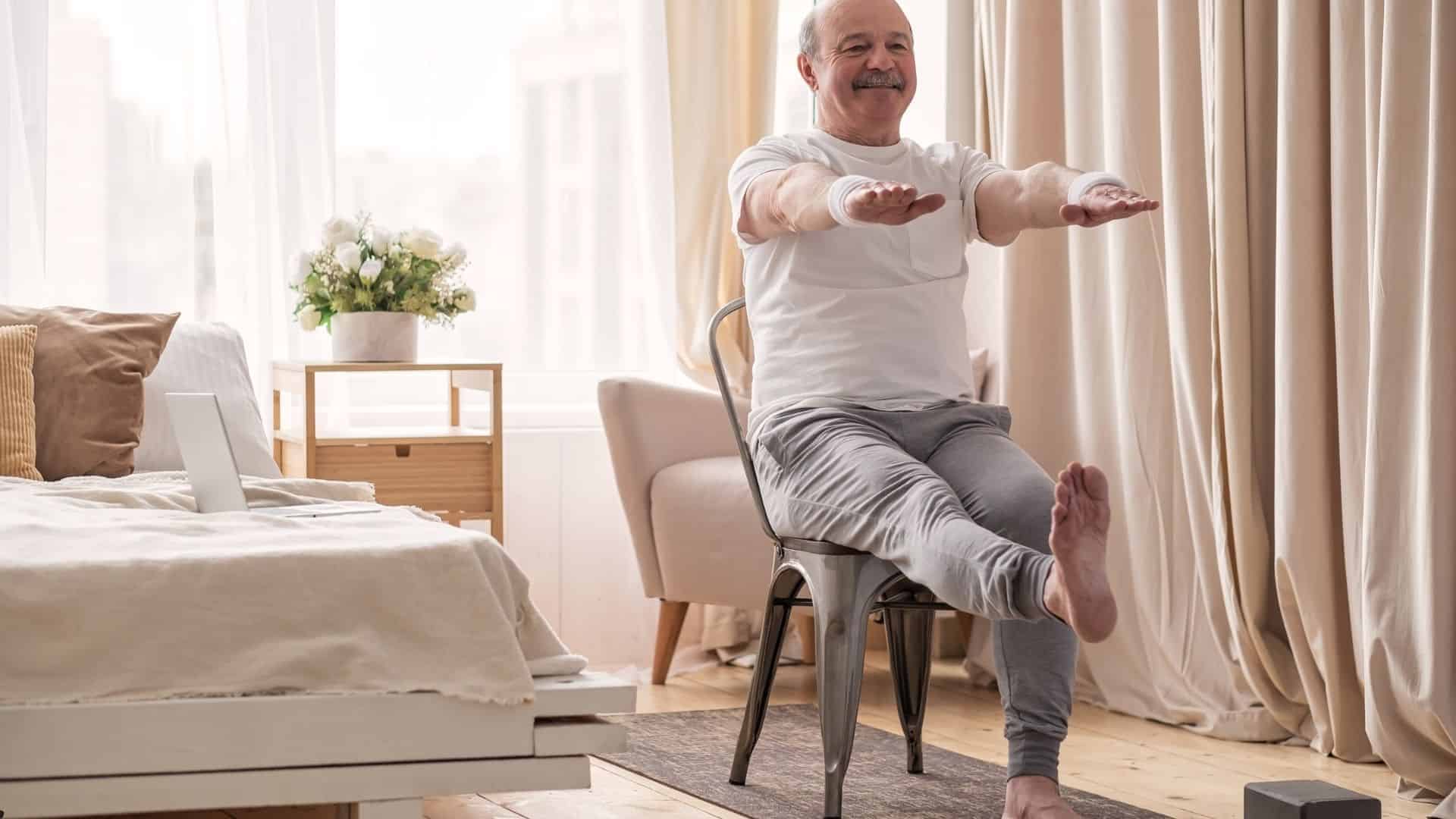
For example, a senior recovering from surgery or illness might need to start with fewer sessions and gradually work up to more frequent practice.
Listen to the Body
Your loved one needs to pay attention to how their bodies feel during and after balance exercises. If they feel fatigued, dizzy, or experience any pain, it’s important to stop and rest.
Overexertion can cause injury, especially in seniors whose muscles and joints might take longer to recover.
Tips to Maintain Regular Practice
Staying consistent with balance exercises can be challenging, but there are several strategies to make it easier and more enjoyable.
- Set a Schedule: Dedicate specific days for balance exercises to build a routine.
- Combine with Other Activities: Pair balance exercises with daily tasks like brushing teeth or cooking (e.g., standing on one leg while stirring a pot).
- Make it Social: Practice with family members or friends to stay motivated.
- Track Progress: Celebrating small victories can go a long way in maintaining motivation. Keeping a journal of the exercises and tracking improvements (like holding a position longer or doing more reps) will help your loved one feel proud of their progress.
- Make it Fun: Incorporate variety and creativity to keep things exciting. Change the exercises from time to time or try new activities, like tai chi or yoga, to prevent boredom.
The Role of Professional Support in Balance Training
While balance exercises are beneficial, having professional support can significantly enhance safety and results.
Trained professionals can customize programs to meet individual needs, especially for older adults dealing with chronic conditions or balance problems.
How Professionals Can Help
- Customized Exercise Programs: Physical therapists can design activities that match seniors’ abilities and health conditions.
- Guidance and Motivation: Professionals like caregivers can encourage and ensure exercises are done correctly.
- Monitoring Progress: Regular assessments help track improvements and adjust the program as needed.
Amy’s Eden Senior Care offers experienced caregivers who can help seniors perform balance exercises in the comfort of their homes. On the other hand, our assisted living homes provide a safe and nurturing environment to thrive for those needing more extensive care, or needing to downsize that cannot be provided at home.
Common Challenges Seniors Face with Balance Training and How to Overcome Them
While balance exercises are highly beneficial, your senior may encounter challenges when starting or maintaining a routine. Recognizing and addressing these obstacles can ensure long-term success.
1. Fear of Falling
For many seniors, the fear of falling is a major barrier to balance exercises. The thought of losing stability and falling can be intimidating, leading to reluctance or hesitation when attempting balance exercises. This fear is understandable, especially if your loved one has already experienced a fall.
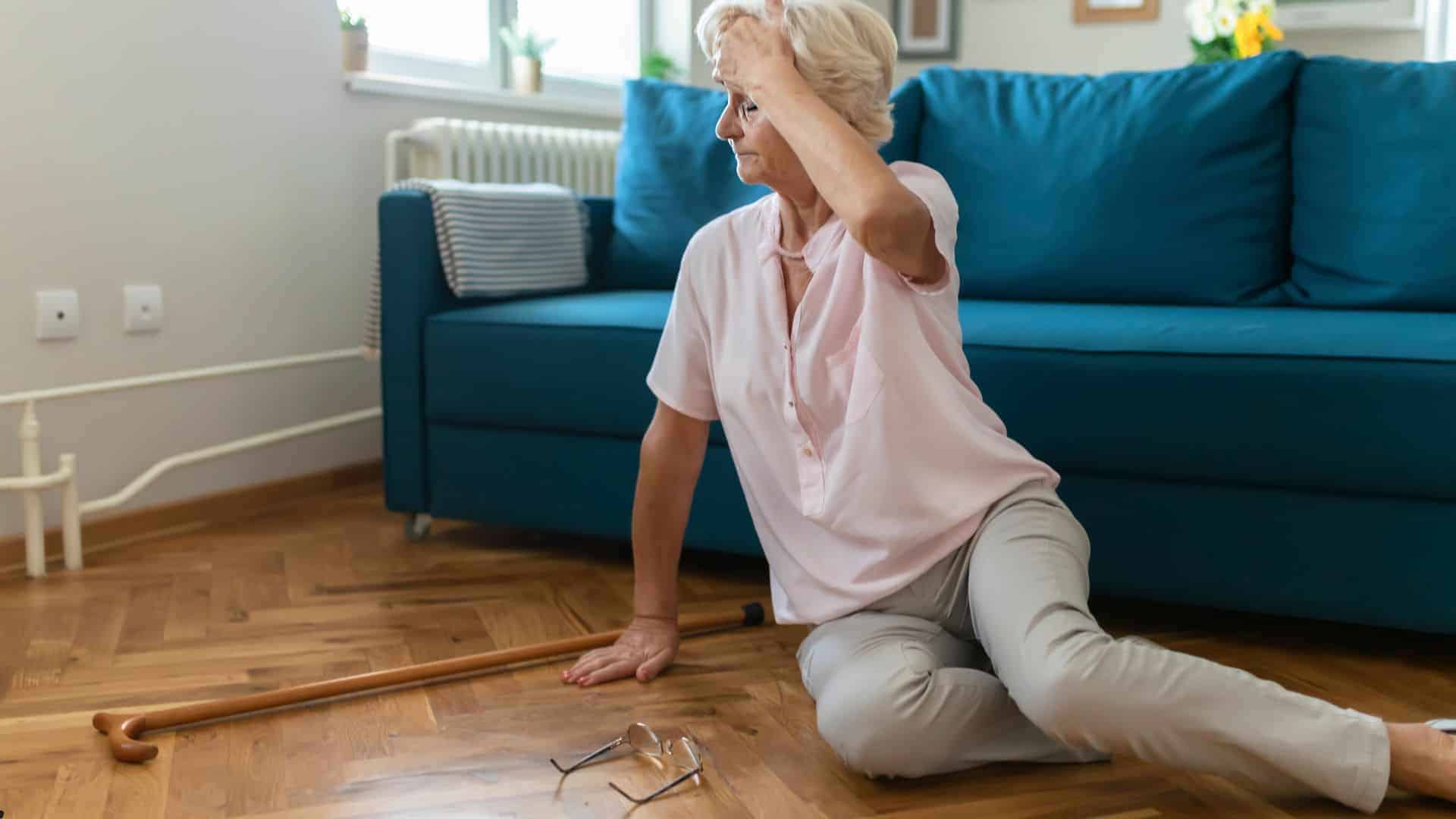
How to Overcome It:
- Start slow. Begin with low-impact, simple exercises and gradually build up the intensity as your senior gains confidence.
- Use Supportive Tools. Encourage the use of sturdy chairs, walls, or counters for extra stability. This provides a safety net while practicing balance, helping to reduce anxiety.
- Positive Reinforcement. Celebrate small victories and progress to help build confidence.
2. Physical Limitations
Many seniors may have physical conditions such as arthritis, joint pain, or muscle weakness that make it difficult to perform certain balance exercises. These physical limitations can hinder their ability to move freely, causing frustration and reducing the likelihood of staying consistent with their balance training.
How to Overcome It:
- Modify exercises. Adapt balance exercises to accommodate any physical limitations. For instance, if standing on one leg is too challenging, seniors can practice sitting-to-standing exercises or use a chair for support while practicing leg raises.
- Consult with a professional. Working with a physical therapist or trainer to tailor an exercise program that considers any physical limitations, ensuring exercises are safe and beneficial.
- Focus on low-impact activities. Activities like swimming or chair yoga can provide the benefits of balance training without straining the body. These exercises reduce stress on the joints while still building strength and flexibility.
3. Lack of Motivation
Your loved one may struggle to stay motivated to practice balance exercises regularly, especially if they feel their progress is slow or don’t see immediate results.
Without motivation, it can be difficult to maintain consistency.
How to Overcome It:
- Incorporate fun elements. Try to make balance exercises enjoyable by adding music, turning them into a game, or practicing with friends or family members.
- Track progress. Small wins can go a long way in boosting motivation and showing tangible results.
- Set realistic goals. Break down long-term goals into smaller, achievable milestones. For example, if the goal is to improve balance, work towards standing on one leg for 30 seconds without support, gradually building up to it over time.
4. Cognitive Decline
Cognitive conditions such as dementia, Alzheimer’s, or other age-related cognitive issues can affect a senior’s ability to remember or follow balance exercises correctly.
This may lead to confusion or difficulty understanding how to perform exercises, and they may become frustrated, giving up on their routines.
How to Overcome It:
- Simplify instructions. Break down exercises into easy-to-follow steps. Use visual demonstrations or reminders to guide the senior through each movement.
- Routine and consistency: Establish a set routine for balance exercises so they become familiar and less overwhelming. Consistency is key to reinforcing muscle memory.
- Engage a caregiver: If cognitive decline is a concern, caregivers can assist with guiding seniors through their balance exercises, ensuring proper technique, and encouraging regular practice.
5. Lack of Access to Support or Resources
Without the right tools or assistance, it can be hard to stay motivated or know which exercises to prioritize.
How to Overcome It:
- Seek professional help: Engage a physical therapist or trainer who specializes in senior fitness to help guide the exercise plan and ensure the exercises are safe and effective.
- Home care assistance: Amy’s Eden Senior Care provides in-home caregivers who can help seniors with their balance exercises. Our caregivers can assist in ensuring exercises are done safely and regularly.
- Use online resources: There are many online resources, including instructional videos and apps, that offer balance exercises for seniors. These can be a helpful way to access new exercises and stay inspired.
Conclusion

Balance exercises are a cornerstone of maintaining strength, stability, and independence in the golden years. While challenges may arise, your loved one can thrive and enjoy a higher quality of life with the right support and commitment
Amy’s Eden Senior Care is here to help every step of the way. Our in-home caregivers can guide your loved one through safe, effective balance exercises. For those needing more comprehensive care, our assisted living homes with just two residents per home, provide the warmth and comfort of home.
Contact us today to learn how we can help your loved one maintain their independence and thrive in their golden years!



